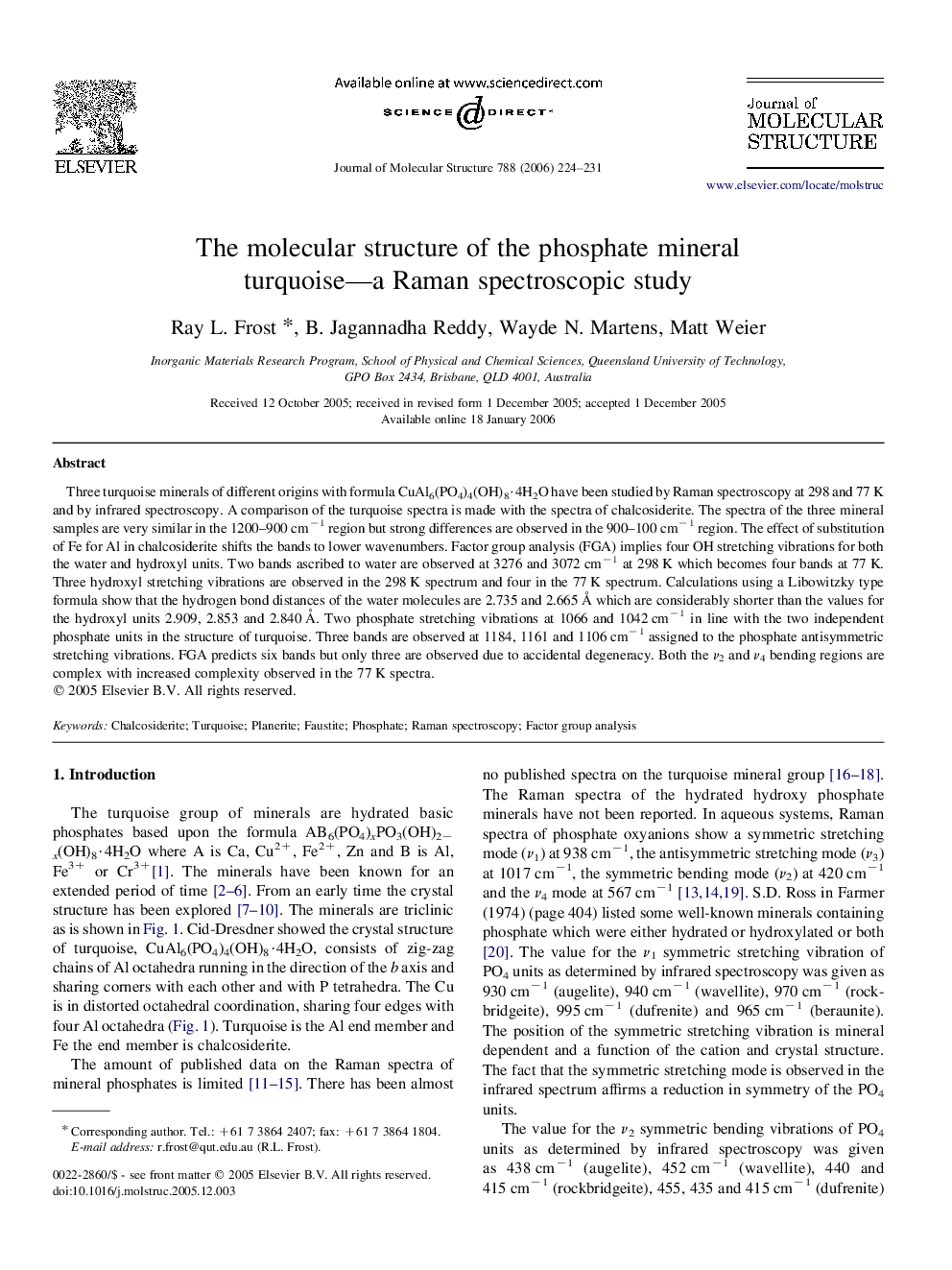| Article ID | Journal | Published Year | Pages | File Type |
|---|---|---|---|---|
| 1407864 | Journal of Molecular Structure | 2006 | 8 Pages |
Three turquoise minerals of different origins with formula CuAl6(PO4)4(OH)8·4H2O have been studied by Raman spectroscopy at 298 and 77 K and by infrared spectroscopy. A comparison of the turquoise spectra is made with the spectra of chalcosiderite. The spectra of the three mineral samples are very similar in the 1200–900 cm−1 region but strong differences are observed in the 900–100 cm−1 region. The effect of substitution of Fe for Al in chalcosiderite shifts the bands to lower wavenumbers. Factor group analysis (FGA) implies four OH stretching vibrations for both the water and hydroxyl units. Two bands ascribed to water are observed at 3276 and 3072 cm−1 at 298 K which becomes four bands at 77 K. Three hydroxyl stretching vibrations are observed in the 298 K spectrum and four in the 77 K spectrum. Calculations using a Libowitzky type formula show that the hydrogen bond distances of the water molecules are 2.735 and 2.665 Å which are considerably shorter than the values for the hydroxyl units 2.909, 2.853 and 2.840 Å. Two phosphate stretching vibrations at 1066 and 1042 cm−1 in line with the two independent phosphate units in the structure of turquoise. Three bands are observed at 1184, 1161 and 1106 cm−1 assigned to the phosphate antisymmetric stretching vibrations. FGA predicts six bands but only three are observed due to accidental degeneracy. Both the ν2 and ν4 bending regions are complex with increased complexity observed in the 77 K spectra.
